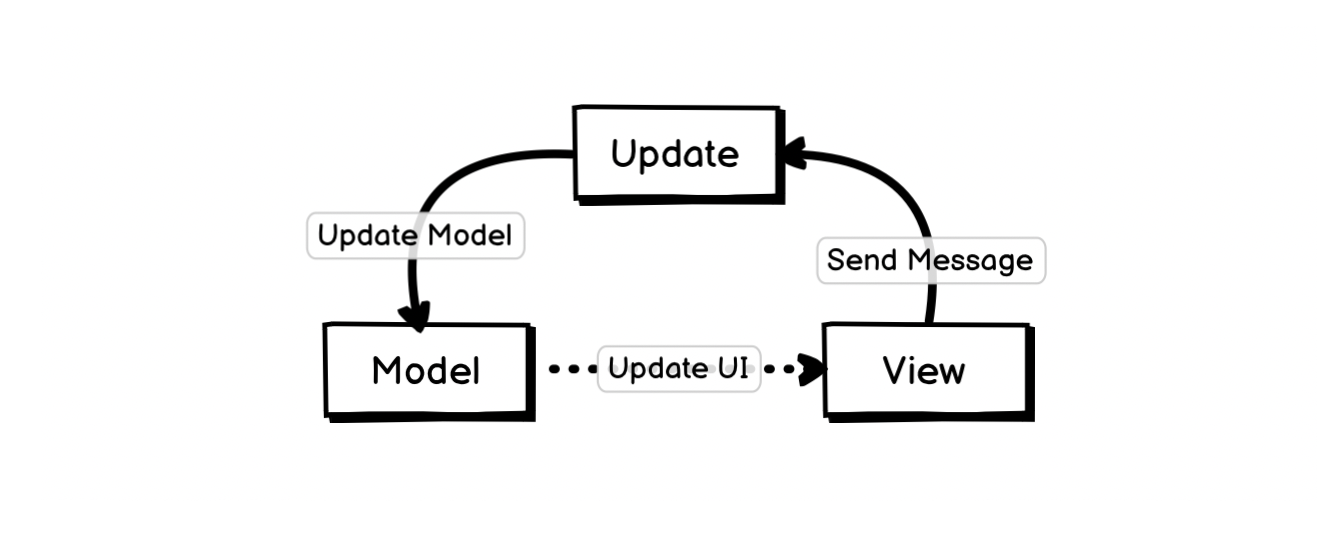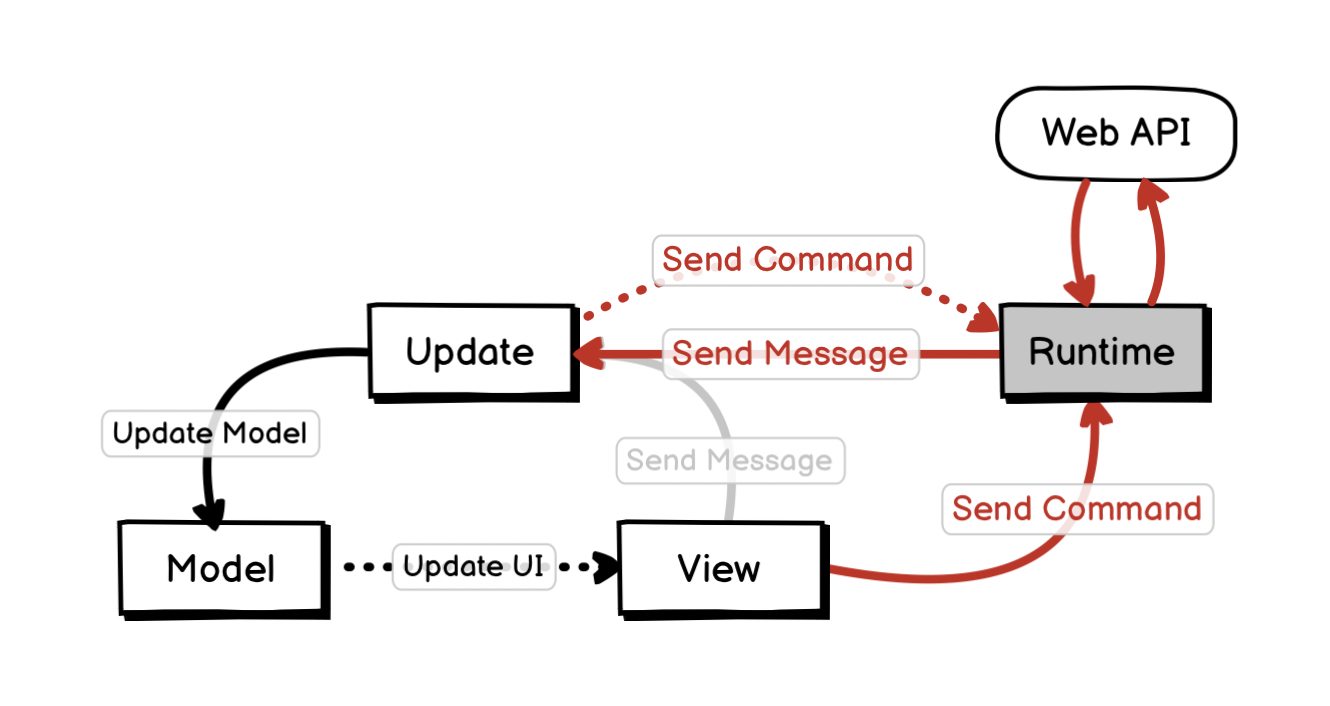Design Patterns / The Elm Architecture
The Elm Architecture◹ is not something necessary exclusive to the Elm language but should be viewed as a generic design pattern for architecting GUI applications.
In fact, this architecture is adopted in many GUI frameworks in different languages, like Iced◹ in Rust. And there are some other architectures that share the same idea, like Flux◹.
The three main components of Elm Architecture are:
- Model: the state of your application
- View: the visual representation of the Model
- Update: the mechanism to update the Model, based on messages
The relation between these 3 components can be described by the following diagram:

Any user’s interaction on the View will trigger a message that will be sent to the Update method, this method will modify the Model. Any changes to the Model will trigger the View to be updated to reflect the changes.
In reality, GUI applications also need to handle more complex tasks, or side effects. For example, in a web application, you might need to make HTTP requests or listen to external signals like WebSocket events.
We need another component that handles the communication between your application and the external environment, and this is called the Runtime.

Your application communicates with the Runtime by sending Commands. When a Runtime receives a Command, it communicates with the external environment to get the work done and sends a Message back to the Update method of your application, so the UI can be updated with the result.
For example, Elm’s Http.get◹ method uses the Web API to send an HTTP request, and it also has an expect parameter to specify what message should be sent back to the application after the request finished.
import Http
type Msg
= GotText (Result Http.Error String)
getPublicOpinion : Cmd Msg
getPublicOpinion =
Http.get
{ url = "https://elm-lang.org/assets/public-opinion.txt"
, expect = Http.expectString GotText
}
If needed, the Update method can also send new Commands to the Runtime. The cycle continues.
Another important concept is Subscriptions. It’s a way to tell the Runtime to subscribe to some external events and send a Message back to Update if needed.

The rest of the flow is pretty much the same as the previous section about sending Commands.